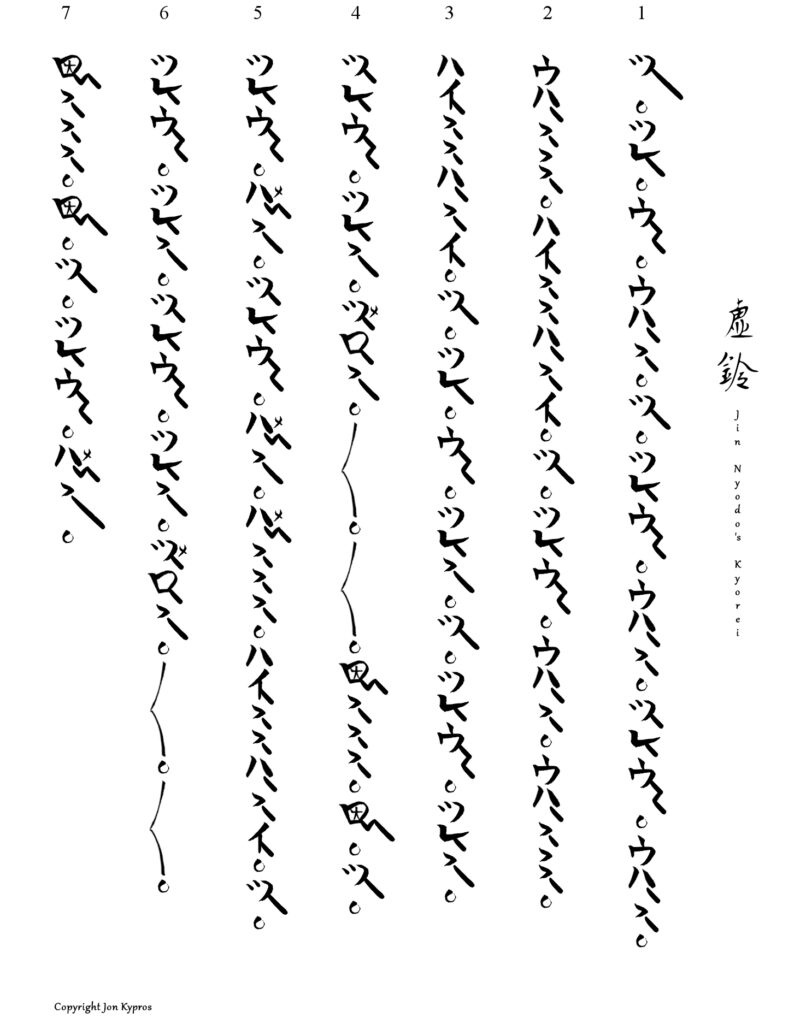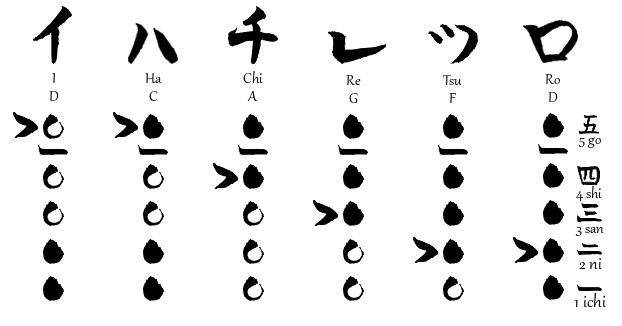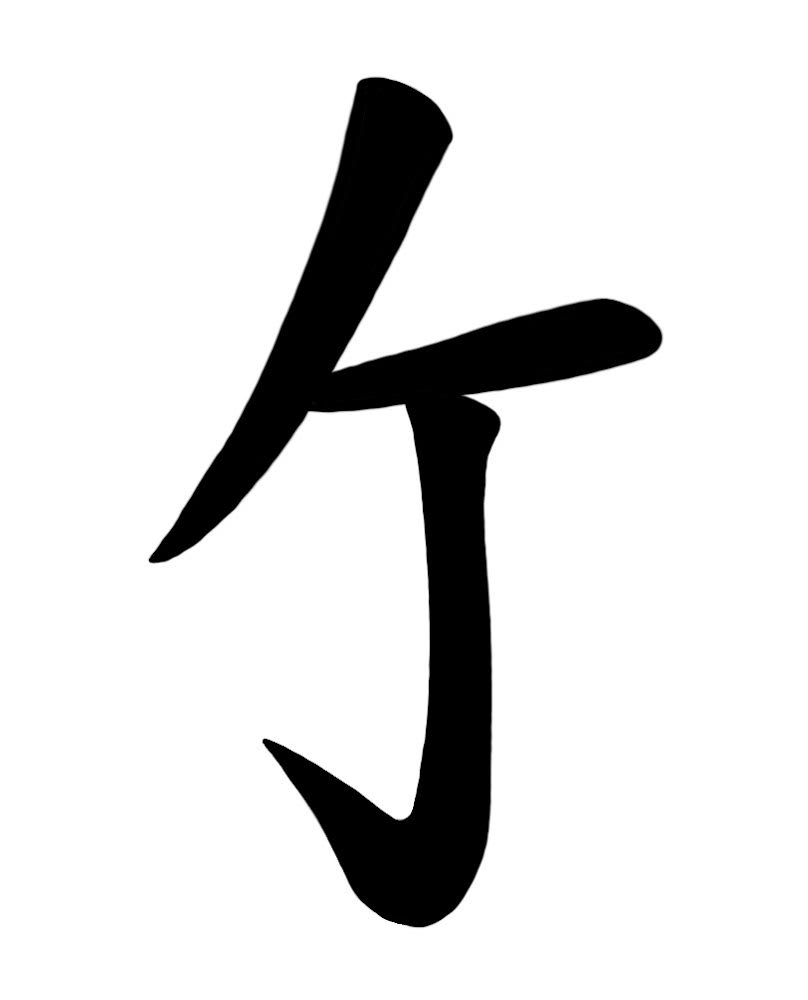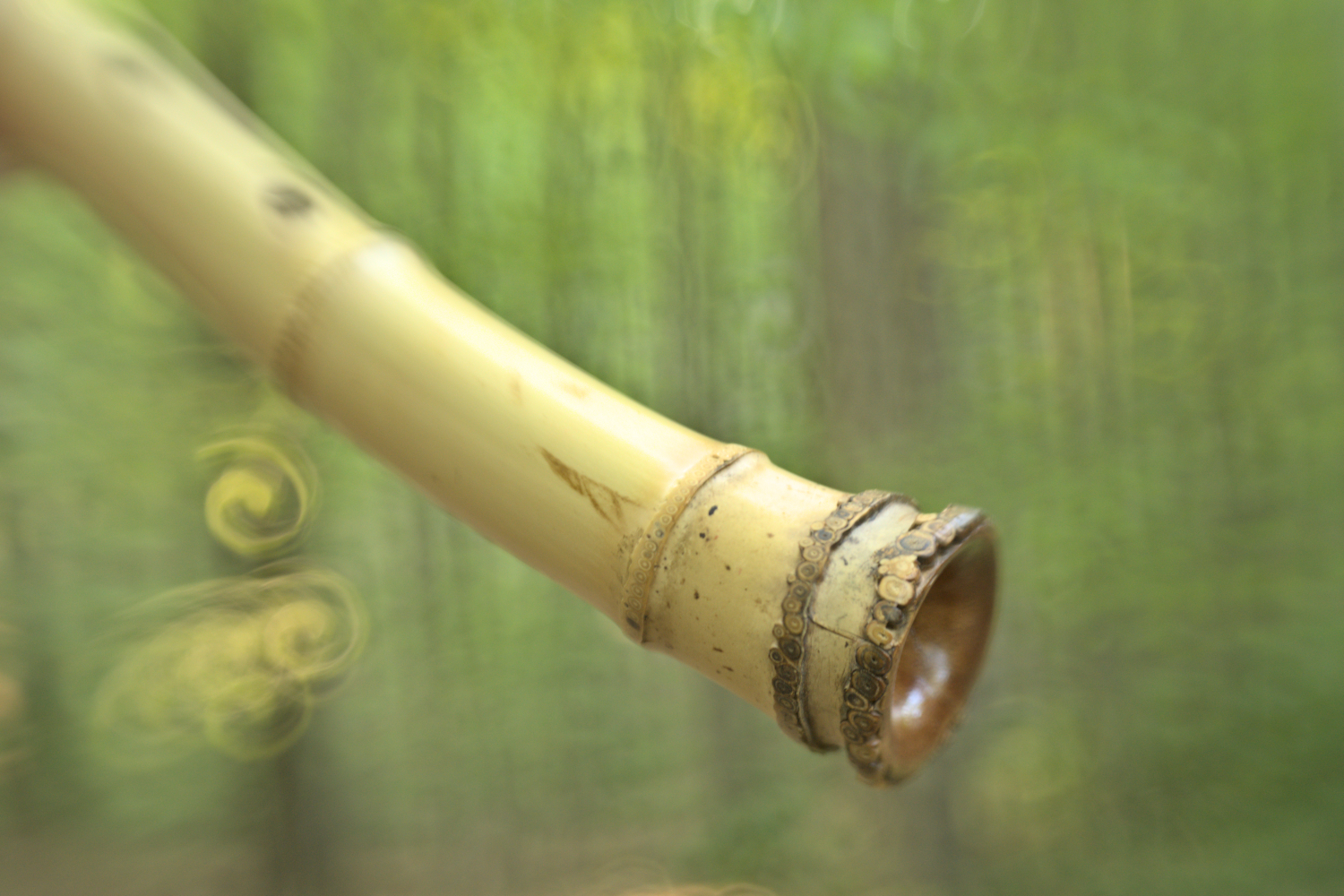How to Play Your First Shakuhachi Honkyoku: Kyorei (虚鈴)
To embark on the profound path of Honkyoku, the most revered pieces of shakuhachi music, we begin with a unique arrangement of Kyorei (虚鈴) by the master Jin Nyodo (1891-1966). His particular version of Kyorei serves as an ideal first Honkyoku because it gracefully remains within the lower, fundamental first register, Otsu which is the deepest and most resonant sound of the shakuhachi. This focus simplifies the initial learning process, as the higher, second register, Kan, presents a greater challenge. It’s quite rare, in fact, to find Honkyoku pieces composed solely within the Otsu register, making his Kyorei truly special for beginners.
Kyorei (虚鈴) – The Jin Nyodo Version
This score has been meticulously prepared by me in the notation style of the Seien Ryu (西園流), reflecting its origins from Fudaiji Temple (普大寺). For your convenience, note charts are included on the right for quick reference. If you’ve yet to discover how to interpret this unique notation, you’ll find a comprehensive guide here.



Just like our note charts, Honkyoku scores are traditionally read from right to left, and from top to bottom. As you delve into the score, observe the following elements that will guide your playing:
- Breath Lines (Takoashi fu): The diagonal lines extending from the notes are known in Seien Ryu as Takoashi fu (or ‘octopus [leg] breaths’). These unique markings gracefully indicate the general duration for which you should sustain each note.
- Pauses of Silence (Ma): The enso ‘o’ circles positioned between breaths are moments of stillness, where you’ll pause and inhale. These are known as ma (間), or ‘space,’ and are as vital to the piece as the notes themselves.
- Dynamic Meri (Line 1, 3rd Breath): On the first line, the third breath (or ‘phrase’), which begins with ウ (U), holds a special instruction. When the breath line sharply turns downwards, it signifies a rapid, deeper meri, further dropping the pitch of U. For example, on a 1.8 shaku, a standard ウ is an Ab/G#, but deepening it will bring it to the pitch of G, equivalent to レ (Re).
- Repeating Phrases (Line 4, Breaths 4 & 5): On the fourth line, breaths four and five, you’ll encounter large bracket or arrow-like symbols ( ⧼). These are elegant shorthand, simply indicating that you should repeat the immediately preceding breath. Therefore, you’ll repeat the third breath of line four, two more times.
- Rising from Meri (Ro Dai Meri): Following these repetitions, you’ll arrive at ロ大 (Ro dai meri). Notice how the breath line takes a sharp turn, but this time upwards. This indication instructs you to raise the pitch back to a normal ロ (Ro), coming up and out of the meri position to your regular upright head position. After this, you’ll perform an atari on ロ as you normally would.
- Applied Technique (Next Line, 2nd Breath): On the subsequent line, the second breath illustrates the same principle, but applied to ハメ (Ha meri).
Learning your first Honkyoku is more than just mastering these notes; it’s an invitation to connect with centuries of contemplative artistry and a profound path into the heart of the shakuhachi spirit. As you practice Kyorei, each breath will fill you with its timeless resonance, and let the moments of silence open new spaces within your own being. Embrace the simplicity, feel the depth, and allow this piece to guide you on a truly unique and enriching voyage, then full-circle, right back to the moment.

